Devil’s Canyon Review: Intel Core i7-4790K and i5-4690K
by Ian Cutress on July 11, 2014 10:00 AM EST- Posted in
- CPUs
- Intel
- Haswell
- i7
- Overclocking
- Devil's Canyon
- i5
- 4790K
- 4690K
Discrete GPU Gaming
When comparing CPUs to APUs, one strength shown by team Blue in the past is the discrete GPU performance. However even when using dual graphics cards at a 1920x1080p resolution, we seem to have hit a wall where extra CPU performance does not necessarily translate to more frames per second. Our results below show little difference between the Haswell processors, and we need to go down to a 2.0 GHz i7 or a 3.5 GHz i3 CPU to see a significant drop in frame rates. The biggest benefit from overclocking seems to be F1 2013 minimum frame rates.
F1 2013
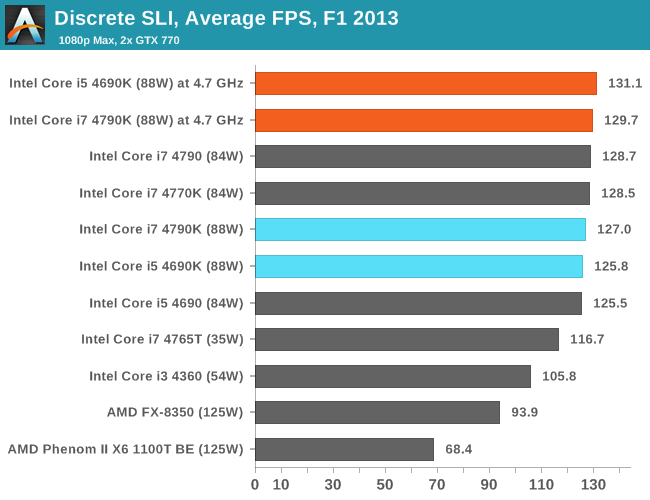

Bioshock Infinite
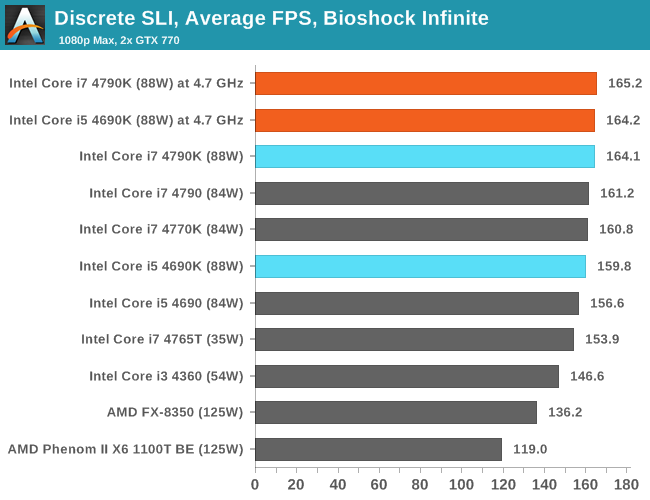
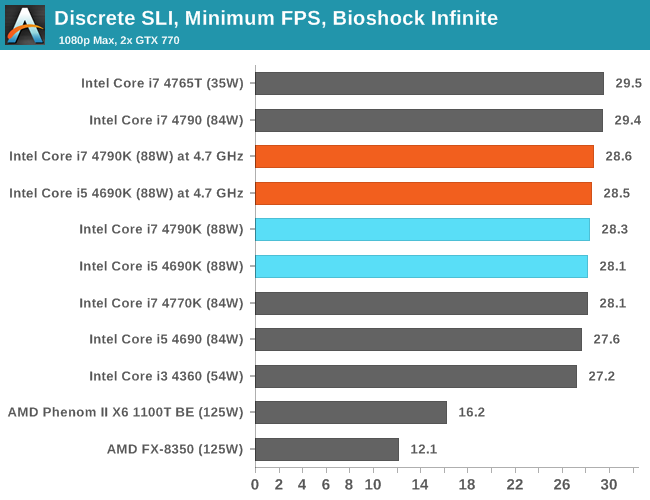
Tomb Raider
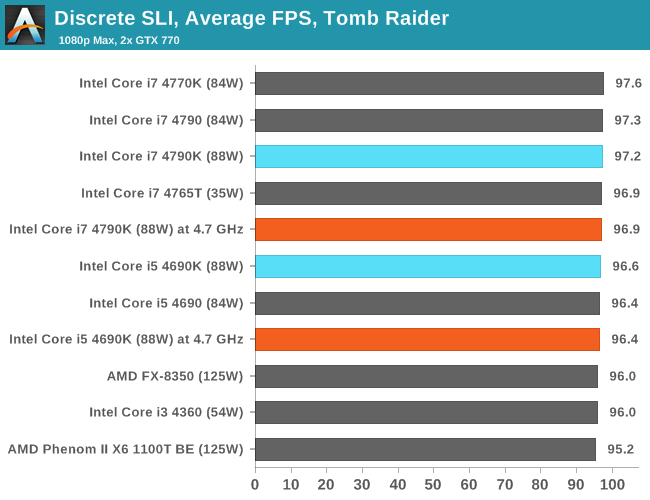
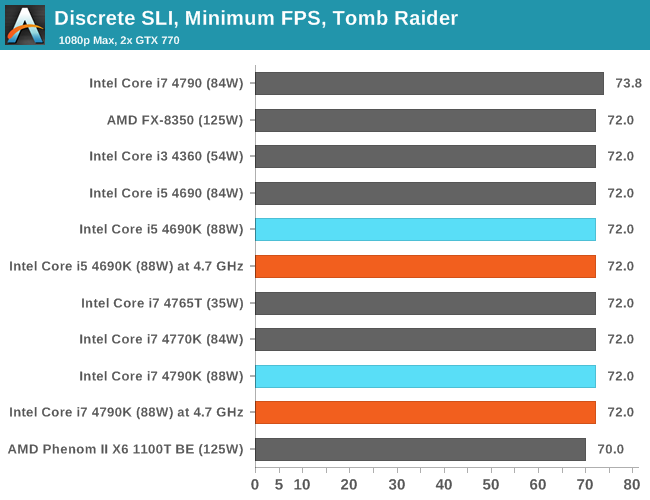
Sleeping Dogs
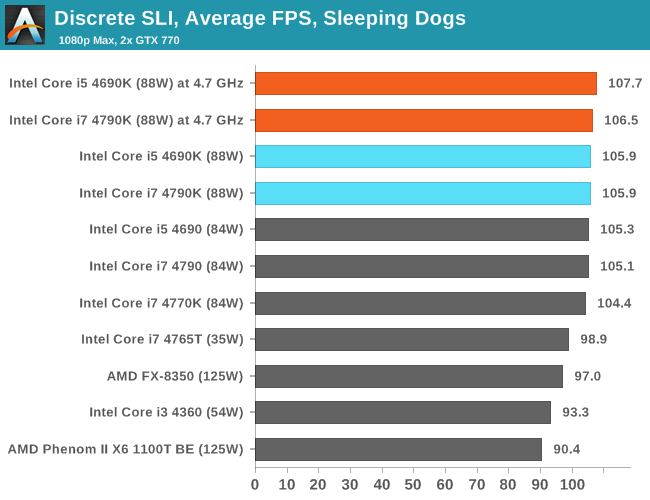
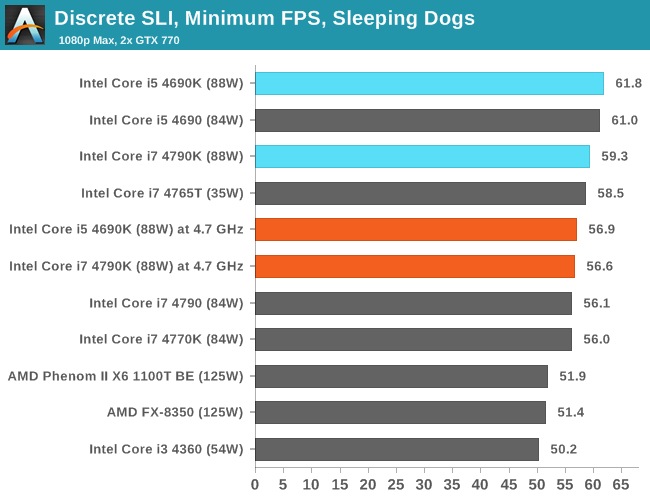
Company of Heroes 2
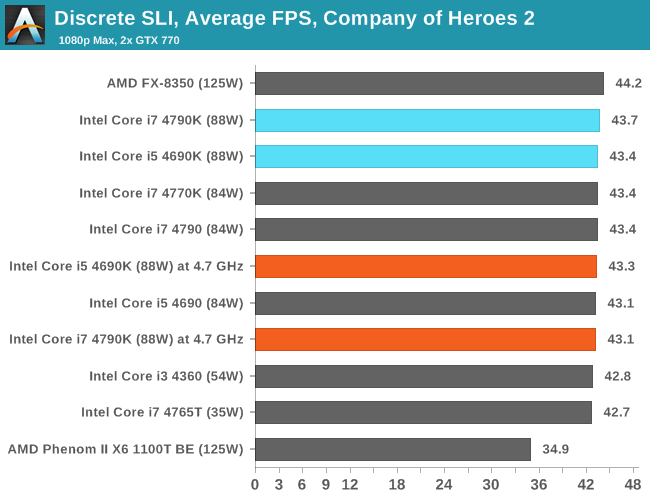

Battlefield 4

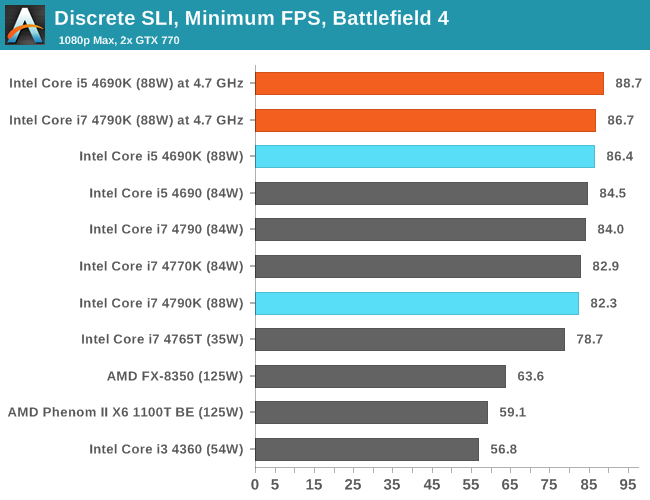










117 Comments
View All Comments
vastac13 - Friday, July 11, 2014 - link
Just when I'm about to go to bed... Good thing I checked 1 more time :D Happy reading folks!Iketh - Friday, July 11, 2014 - link
I just hope Intel has another massive breakthrough in performance soon because rendering a 4K mp4 is gonna SUCKDon't need AMD for this case, the industry will drive it this time...
ddriver - Friday, July 11, 2014 - link
Looks like desktop CPU performance is hitting a brick wall, the last 4 generations are barely incremental in performance. Could very well be the product of AMD ultimately failing to compete in the high end. I don't complain, this way I don't feel the urge to upgrade my 3770k.Antronman - Thursday, July 17, 2014 - link
IBM says silicon will end up limiting CPU capability, and are investigating alternatives.jhawkinstx - Tuesday, March 3, 2015 - link
Yes, when I heard that in the news I went out and invested in companies with alternative tech (Gallium-Arsinide based processors) which did not have the limitations of silicon.......that was in the late 1990s....seems the end of silicon, like peak oil, has been preached for quite some time. For now, I will just wait patiently with my 4 year old Intel boxes. When something more than incremental improvement arrives I will buy.Chaser - Monday, December 29, 2014 - link
Nor do I with my 2600K. It would be throwing money away. I am a single monitor 2440P higher end gamer that does some office work as well. I have no CPU shortfalls.jhawkinstx - Tuesday, March 3, 2015 - link
I agree, I have 4-intel 2600K boxes and which run my business jobs at roughly the same rate as the Xeon based box I bought a year earlier, but with the 2600K costing 1/6 the price of the xeon. Current benchmarks show me nothing worth spending the money on. If anything I would add another 2600K box for roughly $200/processor.JlHADJOE - Saturday, March 21, 2015 - link
On the contrary, CPU performance has been steadily increasing, but Intel has been choosing to spend those IPC gains on lowering the TDP instead of increasing outright performance.wrkingclass_hero - Sunday, July 13, 2014 - link
It's funny, I'm actually rendering a 4K mp4 right now! My 4.6 GHz 3930k looks like it's going to take a grand total of 21 hours to render it... and it's a 3 minute clip...But there are a lot of effects on it (stabilization, layers of videos, etc.) It also doesn't help that it is a two pass.
ddriver - Monday, July 14, 2014 - link
What do you expect, throwing such a workload on a measly single cpu - such tasks are performed by rendering farms with thousands of quad socket machines.